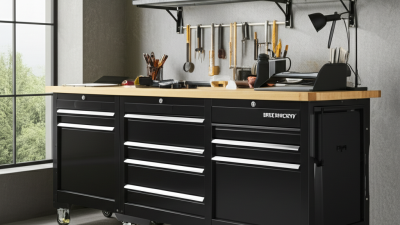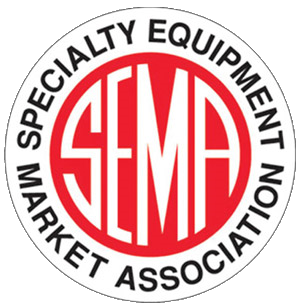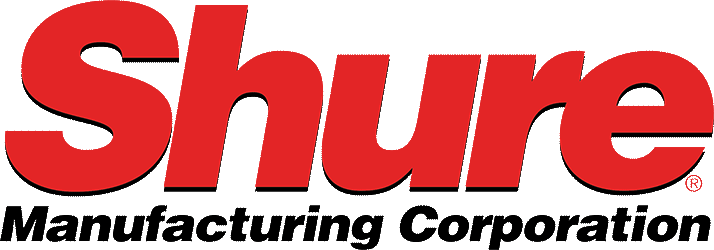The Evolution of Workspaces with the Best Rolling Workbench Solutions
The rapid evolution of workspaces in recent years has been driven by the need for efficiency, flexibility, and innovation. As per a report by Grand View Research, the global workbench market is expected to reach USD 2.53 billion by 2025, with a significant contribution from rolling workbench solutions that allow for mobility and adaptability in various work environments. In an age where operational excellence is paramount, these versatile work surfaces not only enhance productivity but also facilitate collaboration and organization within manufacturing and workshop settings. The phrase "卓越制造,源自中国,服务全球" encapsulates the spirit of modern manufacturing, emphasizing that excellence stems from innovative solutions, such as rolling workbenches, which are essential for meeting the diverse needs of a global marketplace. As businesses continue to adapt to changing demands, adopting high-quality rolling workbench solutions has become a strategic imperative that drives efficiency and performance.

The Transformation of Traditional Workspaces into Dynamic Environments
The transformation of traditional workspaces into dynamic environments is a critical trend shaping the future of work. Over the last decade, the rigid cubicle layout has been replaced by flexible, collaborative spaces that cater to various work styles. A recent report highlights that over 70% of employees prefer to work in environments that foster interaction and creativity—an indication of the shift towards more open and engaging workspaces.
Moreover, the rise of coworking spaces is redefining how we perceive office environments. These shared spaces not only promote community and networking but also respond to the growing demand for flexibility in work arrangements. Recent findings suggest that organizations that adopt flexible workspace models see a significant increase in employee satisfaction and productivity, with over 60% reporting improved well-being. As companies embrace digital technologies and prioritize employee-centric designs, the emphasis on creating spaces that serve the needs of their workforce continues to gain momentum.
The push for environmental sustainability further accelerates this transformation, with many modern workspaces integrating green practices and technologies to minimize their carbon footprint. Reports indicate that organizations adopting phygital workspaces—those that blend physical and digital environments—are leading the way in reducing resource consumption and enhancing employee experiences. The evolution of workspaces is not just about aesthetics; it’s about fostering a culture of collaboration, innovation, and well-being in an ever-changing landscape.
Key Features of Effective Rolling Workbench Solutions
Rolling workbenches have revolutionized modern workspaces, offering versatility and efficiency that traditional fixed workstations cannot match. One of the key features of effective rolling workbench solutions is their mobility. Designed with sturdy wheels and locking mechanisms, these workbenches can be easily transported between different areas, allowing for dynamically efficient workflows and the ability to adapt to various tasks. This flexibility is essential in environments where space is limited or where multiple team members share equipment.
Another important aspect of rolling workbench solutions is their modular design. Many options come with customizable features, such as adjustable height settings, integrated storage solutions, and work surface materials that can withstand diverse working conditions. This adaptability means users can tailor their workspace to suit specific projects, from woodworking to crafting. Additionally, having built-in storage, such as drawers and shelves, enhances organization and efficiency, making it easier to access tools and materials at a moment’s notice. The combination of mobility and customization ensures that rolling workbenches are not just a trend but a long-term solution for optimizing productivity in various work environments.
Cost-Effective Maintenance Strategies for Rolling Workbenches
As rolling workbenches have become increasingly popular in various industries, maintaining them efficiently has become a focal point for businesses looking to optimize their operations. One of the most cost-effective maintenance strategies is regular inspection. By routinely checking for wear and tear, users can catch potential issues before they escalate, saving time and resources in the long run. Simple assessments of wheels and surfaces can prevent costly replacements and ensure that the workspace remains safe and functional.
Another effective approach is to invest in quality materials during the initial purchase of the rolling workbench. Opting for durable materials not only provides longevity but also reduces the frequency of repairs. Additionally, utilizing protective coatings and finishes can shield surfaces from damage caused by chemicals or heavy tools. Regular cleaning using appropriate methods helps maintain the integrity and appearance of the workbench, enhancing its lifespan without significant financial strain. By combining these strategies, organizations can sustain their rolling workbenches in peak condition while managing costs effectively.
Enhancing After-Sales Support for Improved User Experience
In today's rapidly changing work environment, enhancing after-sales support has emerged as a crucial factor in improving the user experience for rolling workbench solutions. A seamless experience extends beyond the purchase—it involves how effectively a company can address issues, provide maintenance, and ensure users feel valued. Companies that invest in comprehensive after-sales services not only differentiate themselves in the marketplace but also foster brand loyalty among their customers.
A key component of effective after-sales support is the availability of resources that help users maximize their workbench's potential. This can include detailed guides, how-to videos, and timely customer support channels that assist users in troubleshooting and optimizing their workspaces. Furthermore, companies that proactively gather feedback from customers can refine their products and services, ensuring that the rolling workbenches meet evolving needs. By prioritizing after-sales support, businesses create a supportive environment that allows users to fully engage with their investments, ultimately leading to increased satisfaction and productivity.
Envisioning the Future of Workspaces: Trends and Innovations
As the workspace continues to evolve, organizations are increasingly adopting innovative designs and solutions to enhance productivity and collaboration. According to a report by Future Workplace, 91% of employees believe that their workspace significantly affects their performance. This perception has led many companies to reconsider their spatial layouts and invest in adaptable tools, such as rolling workbenches, that promote flexibility and movement. These mobile solutions not only optimize the use of space but also encourage teamwork by making it easier to reconfigure areas for different tasks.
In addition to mobility, the integration of technology into workspaces is transforming how employees interact with their environments. A study by the Global Workspace Association highlighted that 78% of organizations are implementing smart office technologies to improve connectivity and streamline workflows. Innovations such as adjustable-height rolling workbenches equipped with built-in power outlets and smart device integration are becoming essential as employees demand more ergonomic and tech-friendly work settings. This shift illustrates a broader trend toward workspace designs that prioritize employee well-being while maximizing efficiency and collaboration in an ever-changing work landscape.
Footer
Resource Center
Contact Us
1901 West Main Street
Washington, MO 63090
Main Directory: 1-800-227-4873
Email: sale@pangcofurniture.com
Affiliations


